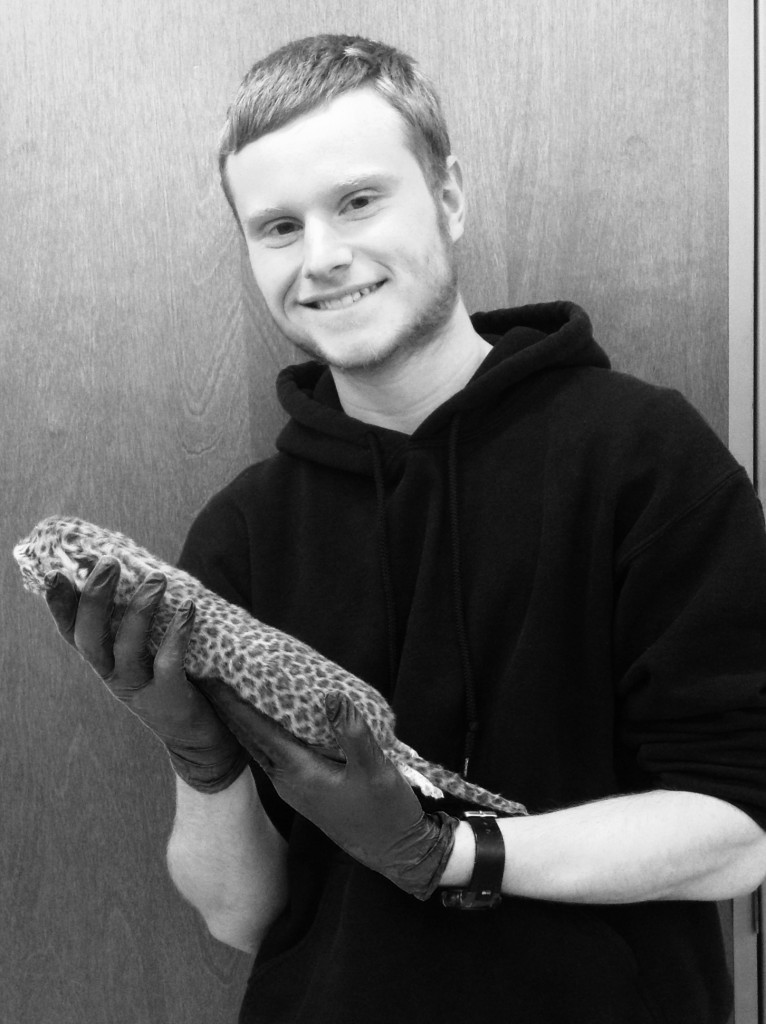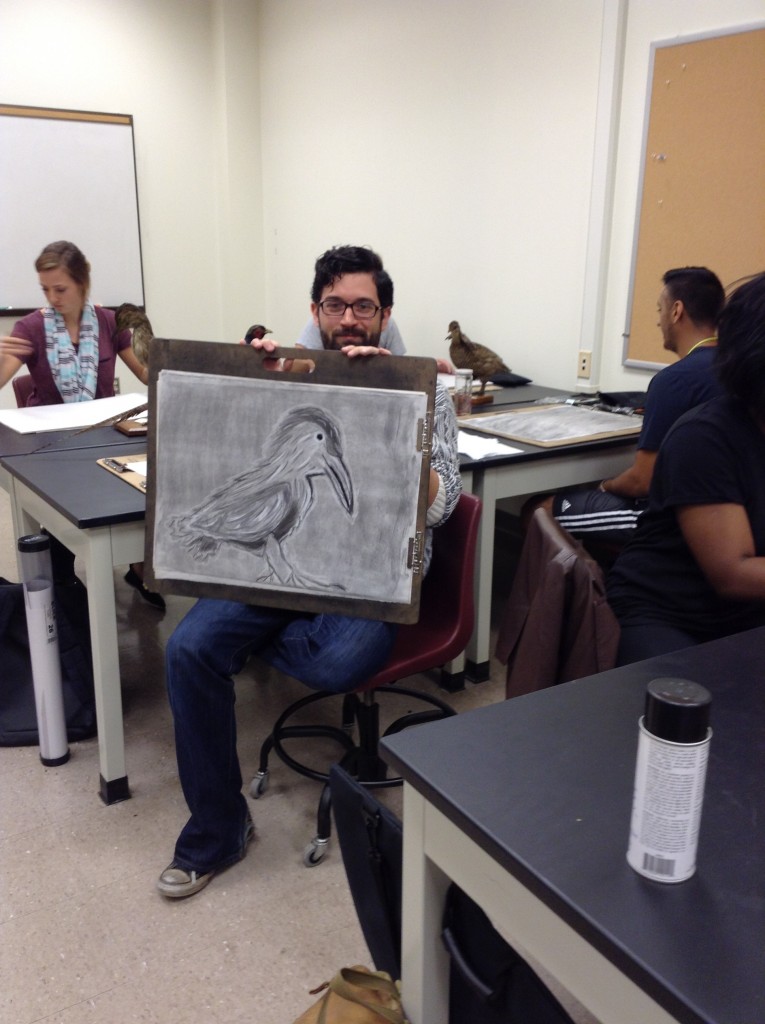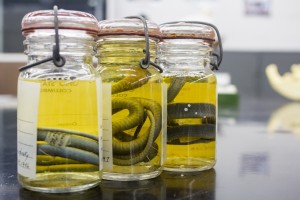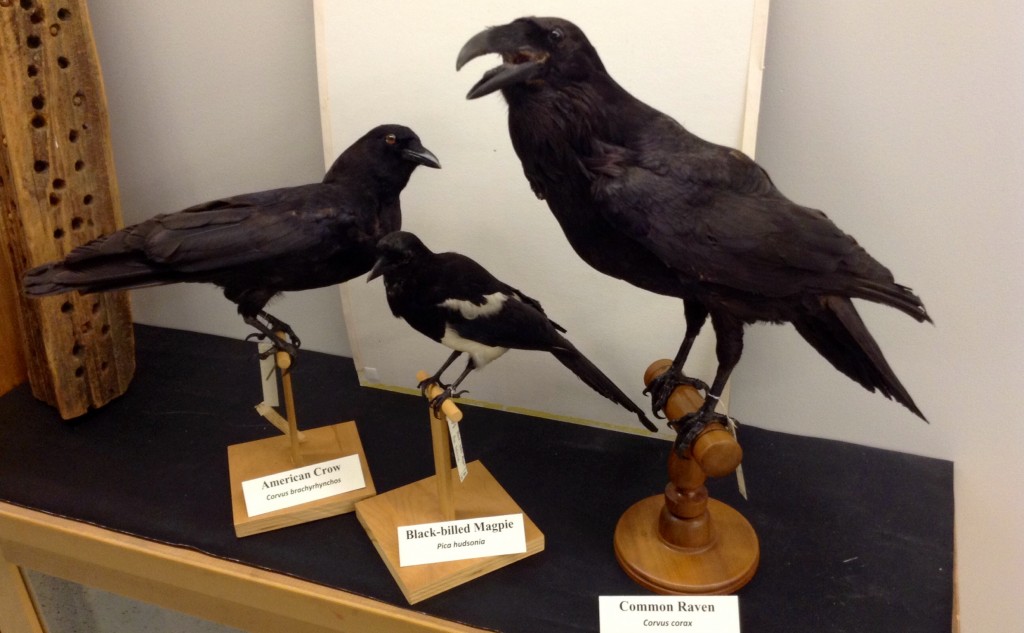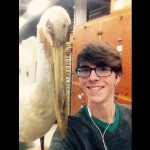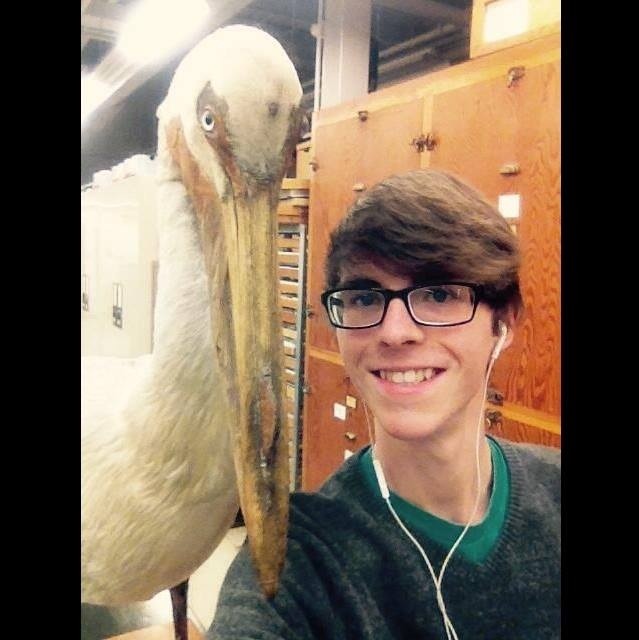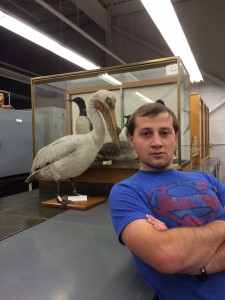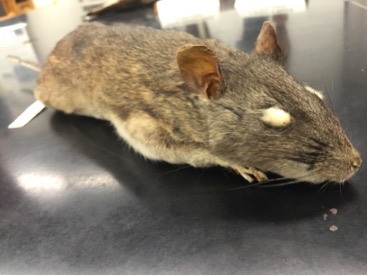
Close up of N. magister. Note the large ears!
For most people, encountering a rat is an unpleasant, if not traumatic, experience. They associate rodents with dirt, nuisance, and swarms. None of those things apply to the Allegheny Woodrat (Neotoma magister– also called the Appalachian Woodrat). The bothersome species that many associate with the word “rat” are brown rats (Rattus norvegicus- also known as Norway rats) and black rats (R. rattus), both of which are

Unlike the bald tails of “pest” rat species, the tail of N. Magister is covered in fur.
invasive in the United States. Although these rodents might look similar at a glance, there are a few ways to distinguish them. The Allegheny Woodrat’s tail is completely covered in hair while other rats have a bald tail. They also have larger ears and longer whiskers than the nonnative rats. (1) This clip provides a closer look at their morphology.
Unlike their pesky cousins, the Allegheny Woodrat typically avoids associating with humans. Rocky areas, such as cliffs and caves, in the Appalachian Mountain region are their natural habitat. Primarily nocturnal, they venture out at night to search for food like plants, seeds, fruits, fungi, and insects. Similar to squirrels, they store food in caches, which they depend on during winter or other times when food sources are limited. (1, 2) Amusingly, they have even been known to cache other items like Band-Aids, gun cartridges, and glass. (3) Their life expectancy is around four years. (1)
Historically, this rodent was found in New York, Connecticut, New Jersey, Pennsylvania, western Maryland, Virginia, North Carolina, and southern parts of Ohio and Indiana. Now they have been extirpated from many places and are endangered here in Ohio. According to the Ohio Department of Natural Resources, the Allegheny Woodrat still remains in Adams County but has not been seen anywhere else in Ohio for several years. (1, 4, 5, 6)
Loss of habitat is one of the primary reasons for the Allegheny Woodrat’s decline, but disease also takes a toll on their population. Raccoon roundworm (Baylisascaris procyonis) is often fatal to them. They accidentally ingest the roundworm eggs found in raccoon feces and become infected, leading to loss of muscle control, lethargy, and potentially death. (1, 2, 4, 6)

N. magister specimens from our collection.
In the Tetrapod Collection, we have eighteen Allegheny Woodrat specimens, most of which were collected in Ohio. The oldest one was collected on December 15, 1923. Decades later, you would have a hard time finding an Allegheny Woodrat here. Hopefully, museums won’t become the only place in Ohio to find the Allegheny Woodrat.
References
- “Allegheny Woodrat (Neotoma Magister).” ARKive. Wildscreen, n.d. Web. <http://www.arkive.org/allegheny-woodrat/neotoma-magister/>.
- Stanesa, Lindsey. “Neotoma Magister (Allegheny Woodrat).” Animal Diversity Web. Regents of the University of Michigan, 2012. Web. <http://animaldiversity.org/accounts/Neotoma_magister/>.
- “Journey with Nature: Allegheny Woodrat.” The Nature Conservatory. The Nature Conservatory, n.d. Web. <http://www.nature.org/ourinitiatives/regions/northamerica/unitedstates/indiana/journeywithnature/allegheny-woodrat.xml>.
- Linzey, A. V., G. Hammerson, J. C. Whittaker, and S. J. Norris. “Neotoma Magister (Allegheny Woodrat, Appalacian Woodrat).” The IUCN Red List of Threatened Species. International Union for the Conservation of Nature and Natural Resources, 2008. Web. <http://www.iucnredlist.org/details/14581/0>.
- “Allegheny Woodrat- Neotoma Magister.” Ohio DNR Division of Wildlife. Ohio DNR, n.d. Web. <http://wildlife.ohiodnr.gov/species-and-habitats/species-guide-index/mammals/allegheny-woodrat>.
6. Monty, Anne-Marie, and George A. Feldhamer. “Conservation Assessment for The Eastern Woodrat, (Neotoma Floridana) and The Allegheny Woodrat (Neotoma Magister).” U.S. Forest Service. USDA Forest Service, Eastern Region, May 2002. Web. <http://www.fs.usda.gov/Internet/FSE_DOCUMENTS/fsm91_054316.pdf>.

Abby is one of our new Volunteers. She works on the general collection
About the Author:
Abby Miller is a 2nd year majoring in Zoology at the Ohio State University and is a volunteer in the Tetrapod Collection.
Like this:
Like Loading...



























